Historic CAVA Spanish Sparklers Redefine Champagne
(Gerry Furth-Sides) Matthew Kaner was anything but laidback at the recent guided Spanish CAVA (sparkling wine) masterclass featuring the “jewels of Cavas Codorníu”, the Ars Collecta Cavas. And the well-known sommelier co-owner of Good Measure is a pretty laid-back guy. This CAVA made in the traditional Champagne method also her means that it is the winery that created that method. Codorníu-Raventós cavas are not only 500 years old but aged in underground caves some 18 miles long near Barcelona. Some 18 miles long! Kaner described his visit there as his “religious experience,” and it just gets better from there. The winery is near Barcelona and easy to visit from there. For details please see: www.visitascodorniu.com/en/
Three of the Ars Collecta wines were among the first 12 single-estate Cavas designated by the Spanish Minister for Agriculture for the Cava de Paraje Calificado designation. The Cava de Paraje Calificado designation is, as of July 2017, a new distinction which sets requirements, characteristics and quality control standards that certify the excellence of Spain’s best premium Cavas. But the Spanish have always been business savvy. Codorníu, the world’s largest producer of sparkling wines fermented in the bottle, sells 60 million bottles annually, twice that of Moët et Chandon, Champagne’s largest producer.
The ambitious Ars Collecta project also created the 457 – the world’s most expensive Cava. 457, the masterpiece of the Ars Collecta collection is a cava that pays homage to the 457 harvests completed by the Codorníu Estate. It is the first set of labels that will now be named in this way.
Pale golden with delicate bubble, Jaume Codorniu is a refined blend of distinctive Chardonnay and Parellada. It has the reputation of being a tribute to the terroir. It is 90 months on the lees to develop texture. It ranges from $90 to $200 a bottle. Another high-end wine was the Finca La Pleta, Cava de Paraje Calificado, Brut 2009, which sells for about $125. This single-vineyard, 100 % Chardonnay wine spent an astonishing 90 months on the lees. Cava de Paraje Calificado is a relatively new designation for the finest cavas.
Jaume Codorníu Gran Reserva Brut 2013, named for Jaume Codorníu who first plante grapes at Cordoníu, is a find at $50. This cava spent 40 months on the lees. The blend is 42.5% Pinot Noir, 42.5% Chardonnay and 15% Xarel-lo. Because of the coastal climate and terroir relatively close to the coast, this sparkler is more intense with a definite slate influence.
The star of the day was a treasured, rare 457 Gran Reserva Brut 2008. Only 100 cases of this wine were produced, and only 12 bottles ever arrived in the United States. Kaner breathlessly told us that only nine bottles of the $200 Brut now remain after our tasting. This cave has a rounder, fuller flavor that became more and more lovely as it opened up.
Gran Codorníu Pinot Noir Brut 2015 made its grand debut in this country at the tasting. It was only recently introduced to the United States. This rosy wine is 100% Pinot Noir. Crisp, mellow and silky, it sells for a practically priced $20 a bottle, and aside. 
The Anna de Codorníu line sell at a lower price because they are produced in greater quantity, spend less time on lees, are aged less and not vintage-dated. The Anna de Codorníu Blanc de Blancs Reserva is made from Chardonnay and three Spanish grapes, Parellada, Xarel-lo, and Macabeo.
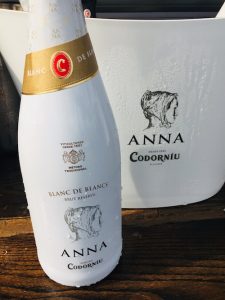
The Anna de Codorníu Brut Rosé a blend of 70% Pinot Noir and 30% Chardonnay, at 12% alcohol represents a rosé that is all the rage this year. It has the depth of chardonnay and the richness of a pinot noir and delivers the sparkle of champagne at the same time. The everyday-is-a champagne day price of about $15 a bottle.
The Codorníu Raventós Group represents the history of a business-minded family over more than five hundred years to the 16th century when vine owner Jaume Codorníu started manufacturing wines. The Codorníu company, the oldest family-owned business in Spain, itself dates back to 1551, when Jaume Codorníu planted the family’s first vineyards in Sant Sadurní, outside of Barcelona. When Anna de Codorníu married Miquel Raventós in 1659, the name of the company officially became Codorníu Raventós, although it is known to the world as Codorníu. However, the surname of Anna has been kept as the name of a brand with renowned prestige. Not only wines but streets have been named after this important figure.
Kaner could not stress their incredible combination of visionary and business savvy from the beginning. In 1872, Josep Raventós of the Codorníu Raventós family from Catalonia made Spain’s first bottle of sparkling wine using the traditional method (second fermentation taking place in the bottle). Today these wines are known worldwide as Cavas. Codorníu, located in the Penedés region of Catalonia, is the largest selling Cava brand in Spain.
Kaner could not emphasize enough how the five centuries of existence have been marked by great milestones signifying growth and strength. One of the first key moments was in 1872 when Josep Raventós Fatjó, after years of experiments, was able to become the first in manufacturing cava, a sparkling white wine which would soon compete with champagne. After his death, in 1885, his son Manuel Raventós inherited Can Codorníu and, following in the footsteps of his father, he changed the direction of the family business.
Currently run by one of the 17th generation family members, Codorniu owns 11 wineries around the world, including the widely acclaimed Artesa winery in Napa Valley, California and the Bodega Septima winery in Mendoza, Argentina
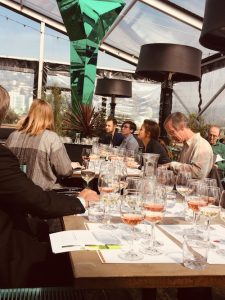
Rooftop CAVA tasting overlooking the Santa Monica mountains. By the time the snow is gone on the San Gabriels in the distance, all the finest, rarest Spanish Cava will be consumed in the USA
Manuel was a tireless visionary who saw the potential of cava and decided that the wineries should exclusively manufacture this beverage. Education in French winemaking, a plague of phylloxera decimating the vines leading to replacing the entire area with an American variety of grapes immune to said insect plague. Manuel decided, despite the hardship, to build some large wineries designed modernist architect Puig I Cadafalch.in Sant Sadurní D’Anoia – wineries which would become leaders in the area and do honour to the cava aged within their walls. The result was a true work of art that came to be known as the “Cava Cathedral.”
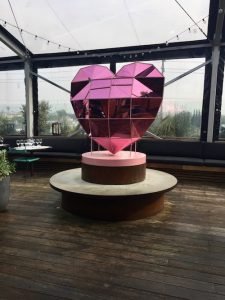
What better expresses a rooftop Spanish cava tasting outside in the middle of winter at E.P. & L.P.,

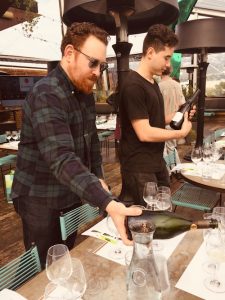
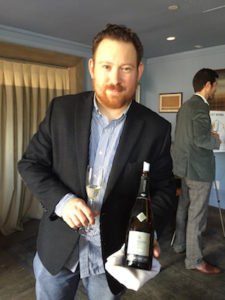
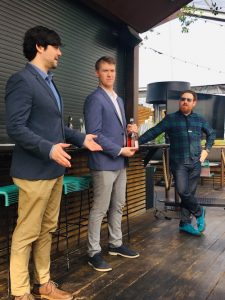

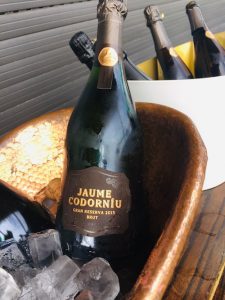
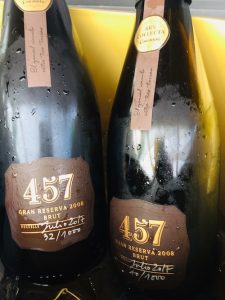


 Gerry Furth-Sides
Gerry Furth-Sides  Barbara Hansen
Barbara Hansen  Chef-owner Alain Cohen
Chef-owner Alain Cohen  Roberta Deen
Roberta Deen  Jose Martinez
Jose Martinez  Nivedita Basu
Nivedita Basu